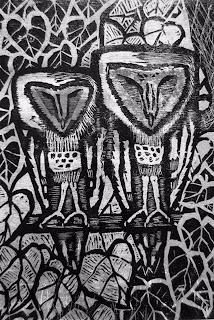 And when we arrived at the village we saw the horned day-moon fixed exactly between two dark mesas at the southern end of the valley. (____) Victoria
And when we arrived at the village we saw the horned day-moon fixed exactly between two dark mesas at the southern end of the valley. (____) Victoria"The moon of the Lunas," my uncle remarked, breaking the silence of the trip. (94) - Victoria
"then a huge golden moon came down from the heavens and settled on the surfaceof the calm waters" (176) - Marilyn.




